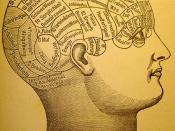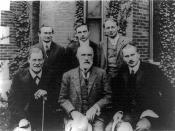This essay is a synopsis of Carl Jung's book "Psychology and Religion." In Psychology and Religion, Carl Jung takes a medical psychology standpoint to discover the links between the human unconscious mind and the ways in which religious symbolism and the idea of religion are deciphered. Jung wrote this material as a series of lectures that was given to Yale students in 1937, and the references to "modern" religion and its symbols relate to that time period. In this book, Jung reveals much of his own system of beliefs and brings into play his Analytic Psychology school of thought regarding religion. He writes that every human mind, at some point, is concerned with religion. In the first chapter, The Autonomy of the Unconscious Mind, he solely discusses the experience of religion and defines it according to a scientific approach. The reader is introduced to the idea of the numinosum, which is described as, "a dynamic existence or effect, not caused by an arbitrary act of will."
Jung continues to explain his theory of religion as being an attitude of the mind that is a result of numinosum, instead of being a creed, which at that time was the common concept of the term religion. He focuses on the human side of religion rather than the rules and limitations of each creed and discovers the physical phenomena that can be observed and dissected. In the first chapter, we are introduced to a patient of Jung's whose neurosis has left him with a painful ailment for which his is consciously unaware of the causes. Jung believes that ailments of the body are cured by psychological confessions, or cathartic experiences. He examined his patient's dreams in order to locate the cause of the neurosis and therefore allow the patient to...


